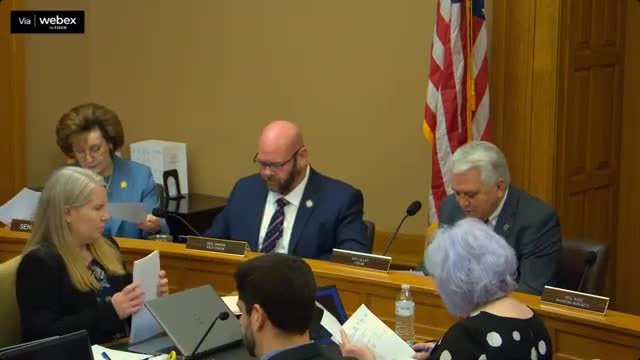Senate committee advances changes to historic rehabilitation tax credit; adds townships and unincorporated areas
February 14, 2025 | Commerce, Standing, Senate, Committees, Legislative, Kansas
This article was created by AI summarizing key points discussed. AI makes mistakes, so for full details and context, please refer to the video of the full meeting. Please report any errors so we can fix them. Report an error »

The committee voted to pass Senate Bill 227 as amended, a bill that revises the rehabilitation tax credit for qualified historic structures. The amendments clarify which populations and geographic areas are eligible for different credit percentages and set an effective date for the changes.
Under the bill’s changes as described to the committee, the 25% credit would apply to qualified rehabilitation expenditures between $5,000 and less than $50,000 in cities with populations greater than 50,000. A 40% credit would apply to expenditures of $50,000 or more in cities with populations greater than 50,000. The prior 40% credit for smaller cities remains in place for cities with populations of 50,000 or less. The amendment adopted during the hearing added townships and unincorporated areas to the lower‑population category to ensure those areas were not excluded from the higher credit percentage intended for smaller jurisdictions.
The amendment also clarifies the effective date: the changes to tax credits apply to qualified rehabilitation projects placed into service on or after July 1, 2025. Committee members noted that rules and standards for rehabilitation would be adopted by the Executive Director of the State Historical Society to ensure projects meet preservation standards.
Senator Dietrich introduced the amendment and moved it; Senator Titus seconded. The amendment was adopted by the committee and the full bill, as amended, was reported favorably for passage.
Why it matters: Altering credit percentages and explicitly including townships and unincorporated areas can affect the financial incentives available for restoring historic properties in rural and small‑city areas, potentially increasing preservation activity outside larger cities.
Under the bill’s changes as described to the committee, the 25% credit would apply to qualified rehabilitation expenditures between $5,000 and less than $50,000 in cities with populations greater than 50,000. A 40% credit would apply to expenditures of $50,000 or more in cities with populations greater than 50,000. The prior 40% credit for smaller cities remains in place for cities with populations of 50,000 or less. The amendment adopted during the hearing added townships and unincorporated areas to the lower‑population category to ensure those areas were not excluded from the higher credit percentage intended for smaller jurisdictions.
The amendment also clarifies the effective date: the changes to tax credits apply to qualified rehabilitation projects placed into service on or after July 1, 2025. Committee members noted that rules and standards for rehabilitation would be adopted by the Executive Director of the State Historical Society to ensure projects meet preservation standards.
Senator Dietrich introduced the amendment and moved it; Senator Titus seconded. The amendment was adopted by the committee and the full bill, as amended, was reported favorably for passage.
Why it matters: Altering credit percentages and explicitly including townships and unincorporated areas can affect the financial incentives available for restoring historic properties in rural and small‑city areas, potentially increasing preservation activity outside larger cities.
View full meeting
This article is based on a recent meeting—watch the full video and explore the complete transcript for deeper insights into the discussion.
View full meeting
